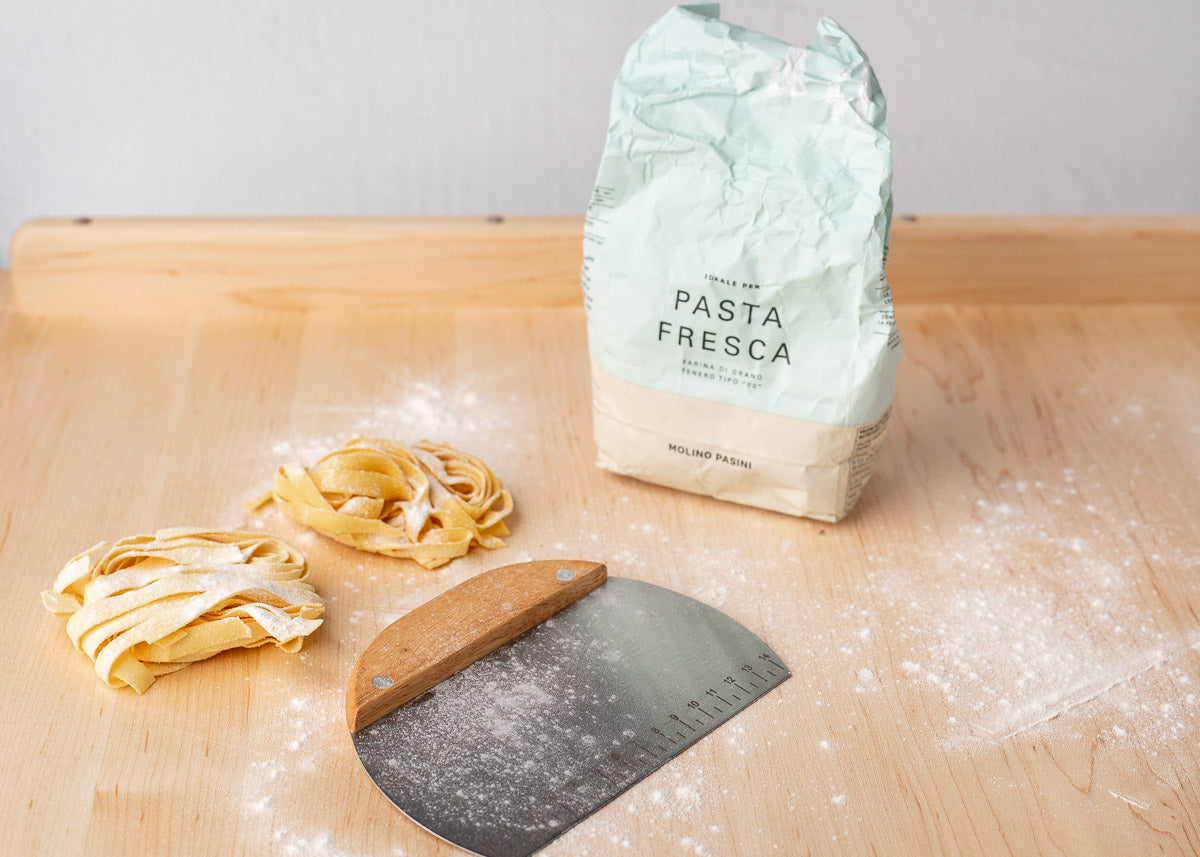
Everything You've Ever Wanted to Know About Pasta Boards
|
|
Time to read 5 min
|
|
Time to read 5 min
If you’re keen to elevate your pasta-making game, a key tool to consider is the pasta board—a staple in any serious pasta maker's kitchen. You’ve likely seen those nonnas on Pasta Grannies rolling out their dough on a large wooden surface or even a special table designed just for pasta making. But why? What’s the purpose and how do you source your own?
Here we dive into the details, breaking down how to find or make a quality pasta board as well as what the benefits of having one.
Table of Content
A pasta board is a large wooden surface designed to prepare homemade pasta on. In Italy, it goes by the name of spianatoia and is commonly found in the homes of pasta makers. It’s similar to a pastry board, although pasta boards tends to be made exclusively of wood while pastry board can use other materials such as marble.
Although it is possible to prepare homemade pasta on a variety of surfaces, wood is best. For this reason, most pasta boards are made of wood. In Italy, pasta boards are typically made out of locally-sourced beechwood, while in North America, maple is more common. Other woods that are suitable for pasta boards include cherry and walnut. In general, you want to find a board that is made out of a durable, uncoated hardwood.
There are several practical reasons why you want your pasta-making board to be made out of wood:
Smooth surfaces made of metal, granite, or marble will be too cold and may cause your dough to slip and slide.
While there are no hard and fast rules, it is helpful to consider the size of your board before purchasing or making one. You’ll want to keep in mind the amount of pasta you’ll be making at once. While kneading pasta dough doesn’t take up too much space, rolling it out and shaping it can be quite the process, requiring several feet of work space! You’ll also want to keep in mind how big your kitchen is and where you will be able to store the board.
Our wooden pasta board is 28” long and 22” wide, which we find is ample space to roll out a standard batch of pasta (four-person dough). However, you can find smaller boards if it suits your needs, just know that you won’t be able to roll out your dough with an Italian rolling pin on a smaller board.
Other things to consider when sourcing a board for pasta making are:
We get this question a lot and our answer is always the same: no, you don’t absolutely need one, especially if you are new to pasta making. You can mix and knead pasta dough in a bowl, in a food processor, in a stand mixer, or on any other clean wooden work surface.
However there are significant benefits to having a pasta board, including:
Yes, it's possible to make your own board for pasta-making. Just be sure that you use the right kind of wood (mentioned above) and leave the wood uncoated. One major benefit of making your own board is that you can customize the size and add any other embellishments that you'd like. If you enjoy DIY carpentry projects, then this might be a route to consider.
Here are few video tutorials to get started:
You can also get in touch with a local woodworker to inquire if they can make a custom pasta board for you.
Unlike a wooden cutting board, a board for pasta making don't require as much maintenance. That's because if you use it regularly and store it properly, it should stay well-hydrated!
If you use your pasta board regularly, you don’t need to do anything to season. The moisture from the pasta dough will keep your board well-hydrated. If you notice your board is getting a little dried out, you can always rub it with a little bit of food-grade mineral oil on it. With regular use, your board will remain in tip-top shape.
After making pasta, use a sturdy metal bench scraper to scrape up any bits of dough stuck to the board. Then wipe down with a clean, damp cloth. It’s as simple as that! Only use your pasta board to make pasta. Plain pastry dough is okay too. Be aware that any seasonings or colorants may stain your board.
The q.b. Cucina Reversible Wooden Pasta Board
An essential piece in our pasta tools collection, designed to rest securely on your countertop. Made of hard maple wood, our board comes with a lip on both the top side and bottom side of the board, making it reversible. The dual lips also ensure that the board doesn’t warp over time.
Although having a pasta board isn't required to make great pasta, it can be a helpful tool to have in the kitchen. When sourcing a board, be sure to consider the type of wood used, dimensions, and quality. Ultimately, pasta makers who roll out dough on the reg will find that investing in a durable, well-made board is a worthwhile endeavor!

